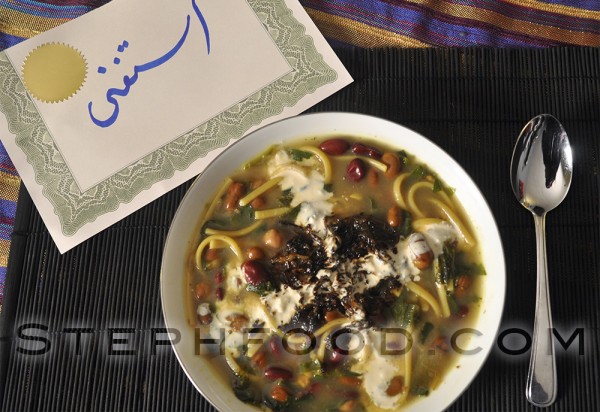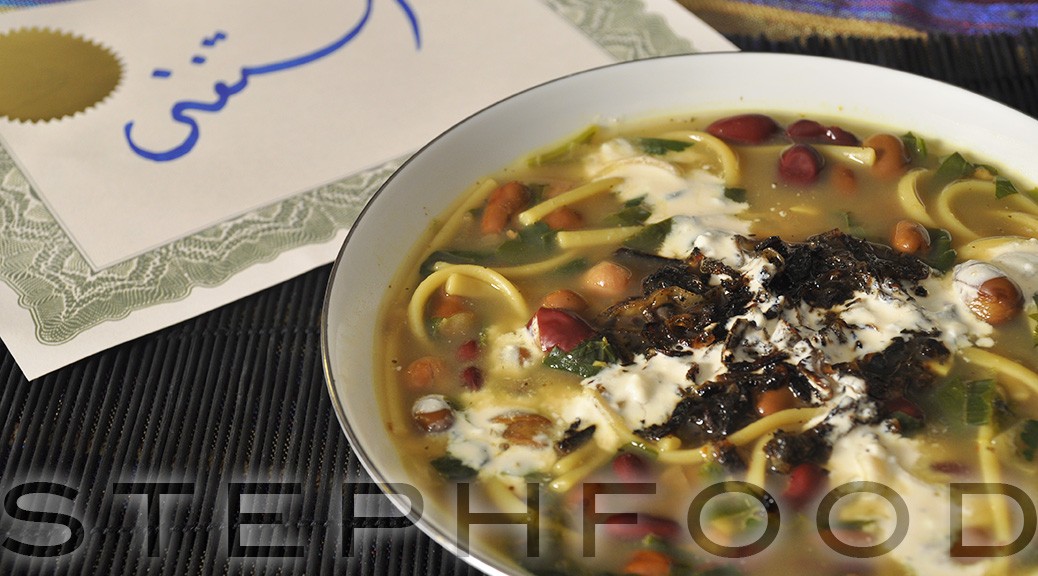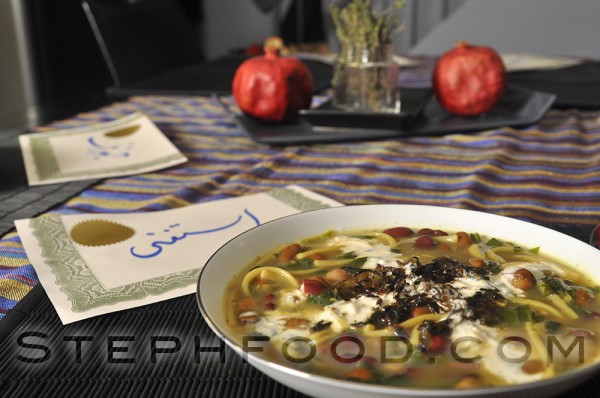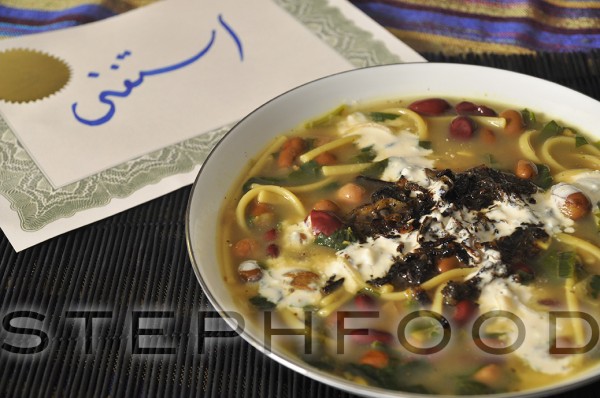I think this is my favourite new dish for Winter, though I had never even heard of it before January. I’m pretty eager to try “new” Persian dishes.
It started at work, when I caught a peek of my colleague’s lunch. She’s Persian, and I often ask her twenty questions about things she’s been cooking. It was “ash”, a thick soup made up mostly of legumes, greens and herbs. I looked up recipes right away.
Lucky for me one of my current favourite cookbooks, Louisa Shafia’s “New Persian Kitchen” had a good recipe in it. (No joke, this book is FULL of good recipes. There hasn’t been a dud yet). This is the recipe I followed the first time I made the dish.
After talking to my colleague, I decided to make some modifications to the recipe. Her family often puts more fresh herbs and green onion in the dish, and I was really keen on using kashk instead of the suggested yogurt. Kashk is a sort of preserved yogurt that adds a bit of creaminess and a unique flavour to the dish. It is quite strong tasting, and isn’t for everyone, so I understand why plain yogurt was substituted (I have both listed in the recipe below).
Reshteh is a type of Persian noodle. If you can’t find reshteh, you can use linguine instead. I haven’t yet tried real reshteh, but the linguine was a great substitute.
One last note: This soup is even better the next day! You’ll probably see the same sentiment expressed on every Ash recipe you see, but it’s true!
(Edit: I’ve just had some clarification on what is considered a “soup” and what is considered a “stew” in Persian cooking. Ash is considered more like a soup, even though it is thick and chunky. Persian stews, like fesenjan and qormeh sabzi, are generally eaten with rice. Ash is not, so I have corrected my wording in this post.)

Persian Noodle and Legume Soup (Ash-e Reshteh)
Adapted from Louisa Shafia’s “New Persian Kitchen”
Ingredients:
- 2 yellow onions
- 4-6 scallions, chopped (green and white parts separated)
- 4 tablespoons grapeseed oil
- 2 cups cooked chickpeas
- 2 cups cooked kidney beans
- 2 cups cooked fava beans or black-eyed peas
- ½ cup lentils
- 4 cloves garlic, minced
- 1 teaspoon ground turmeric
- 2 heaping tablespoons dried dill weed
- 3 heaping tablespoons dried mint, divided
- 1 tablespoon dried fenugreek (optional)
- 6-8 cups light stock (like vegetable or chicken)
- sea salt
- 4 ounces reshteh or linguine noodles, broken into thirds
- 4 cups coarsely chopped spinach leaves
- 2 cups roughly chopped fresh herbs (parsley and/or cilantro) (add more, if you like)
- ⅓ cup freshly squeezed lemon juice
- 1 ½ cups kashk, or thick Greek-style yogurt, for garnish
Preparation:
- Heat a large pot over medium heat and add 1 tablespoon of the oil.
- Dice 1 of the onions and the white parts of the scallions. Add this to the pot and cook for until it starts to brown.
- Add the legumes, garlic, turmeric, dill, fenugreek and 1 tablespoon of the mint.
- Add the broth and bring to a boil. Decrease the heat to medium-low and simmer, covered, for 30 minutes.
- While the soup is cooking, half the second onion and slice into thin half-moons. Heat a skillet over high heat and add 3 tablespoons of oil. Add the onions and fry, stirring frequently, for about 10 minutes, until golden.
- Add 2 tablespoons of mint to the onions and sauté until soft and fragrant.
- To the soup pot, add the noodles, fresh herbs, leafy greens and the green parts of the scallions to the soup, and stir well so that the noodles don’t clump.
- Cook for an additional 30 minutes, until the noodles are tender and the soup has thickened. Once the noodles have softened, stir in the lemon juice and add salt to taste.
- If your kashk is thick like a paste, you will need to thin it out a bit. Take a small amount of the soup broth and mix it into the kashk, until it is the consistency of a thick yogurt.
- Serve garnished with a large dollop of kashk (or yogurt) and a spoonful of the fried onions.



